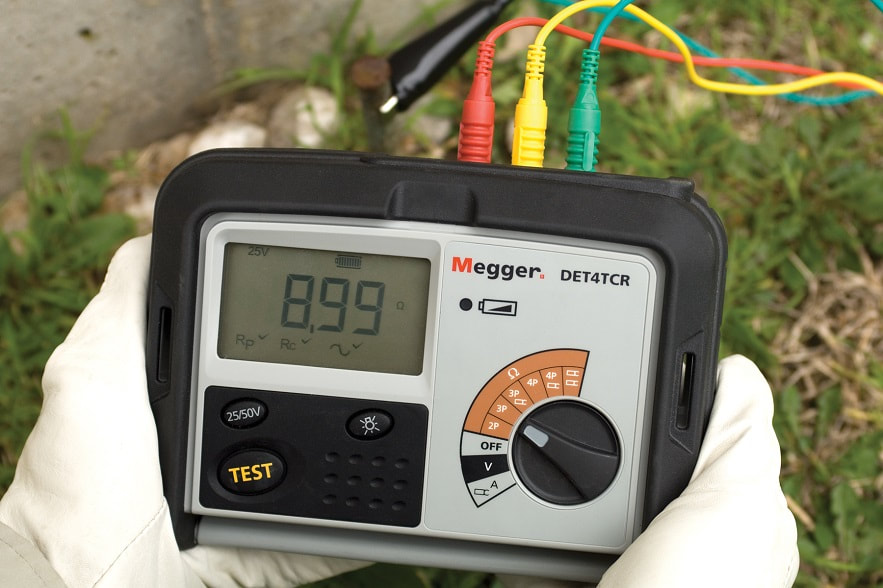Poor grounding can lead to a lot of downtime, but the lack of good grounding can be very dangerous and potentially damaging to your equipment. Over time, corrosive soils that contain salt, high moisture and high temperatures can degrade the ground rods and their connections. So even though the ground system may have had low earth ground resistance values when it was first installed, the resistance of the grounding system can increase if the rods are corroded.
For that reason, an earth ground resistance tester is an essential piece of equipment that will help you make sure you maintain uptime and all of your equipment safe. All grounds and ground connections should be checked frequently as part of your maintenance plan. If the earth ground resistance tester measure an increase of 20% in ground resistance, a technician should be called to source the problem and make the correction to fix the resistance by replacing or adding new ground rods to the system.
There are four variables that affect the resistance of a ground system: the depth or length of the ground electrode, the number of ground electrodes, the diameter of the ground electrodes and the ground system design.
Placing ground electrodes deeper is an effective way to reduce ground resistance. Soil isn't consistent in its resistivity and can be quite unpredictable at times. The resistance level can be reduced by doubling the length of the ground electrode. And while that's sometimes not possible, in areas that are composed of rock, for example, alternative methods such as grounding cement are a viable option.
As far as the diameter goes, increasing it has very little effect in reducing resistance. For instance, if you double the diameter of a ground electrode, the resistance would only decrease by about 10%. Increasing the number of electrodes, however, is a much better way to reduce resistance. But in order for that to be effective, the electrodes need to be parallel and the spacing needs to be equal to the depth of the driven rod.
Simple grounding systems consist of one ground electrode, and that's the most common form of grounding. More complex system utilise multiple ground rods, connected, grid or mesh networks, ground loops and ground plates. Generally, these systems are installed at power generation substations, cellphone tower sites and central offices. These complex networks increase the amount of contact with the surrounding earth and reduce the ground resistances.
There are four variables that affect the resistance of a ground system: the depth or length of the ground electrode, the number of ground electrodes, the diameter of the ground electrodes and the ground system design.
Placing ground electrodes deeper is an effective way to reduce ground resistance. Soil isn't consistent in its resistivity and can be quite unpredictable at times. The resistance level can be reduced by doubling the length of the ground electrode. And while that's sometimes not possible, in areas that are composed of rock, for example, alternative methods such as grounding cement are a viable option.
As far as the diameter goes, increasing it has very little effect in reducing resistance. For instance, if you double the diameter of a ground electrode, the resistance would only decrease by about 10%. Increasing the number of electrodes, however, is a much better way to reduce resistance. But in order for that to be effective, the electrodes need to be parallel and the spacing needs to be equal to the depth of the driven rod.
Simple grounding systems consist of one ground electrode, and that's the most common form of grounding. More complex system utilise multiple ground rods, connected, grid or mesh networks, ground loops and ground plates. Generally, these systems are installed at power generation substations, cellphone tower sites and central offices. These complex networks increase the amount of contact with the surrounding earth and reduce the ground resistances.

